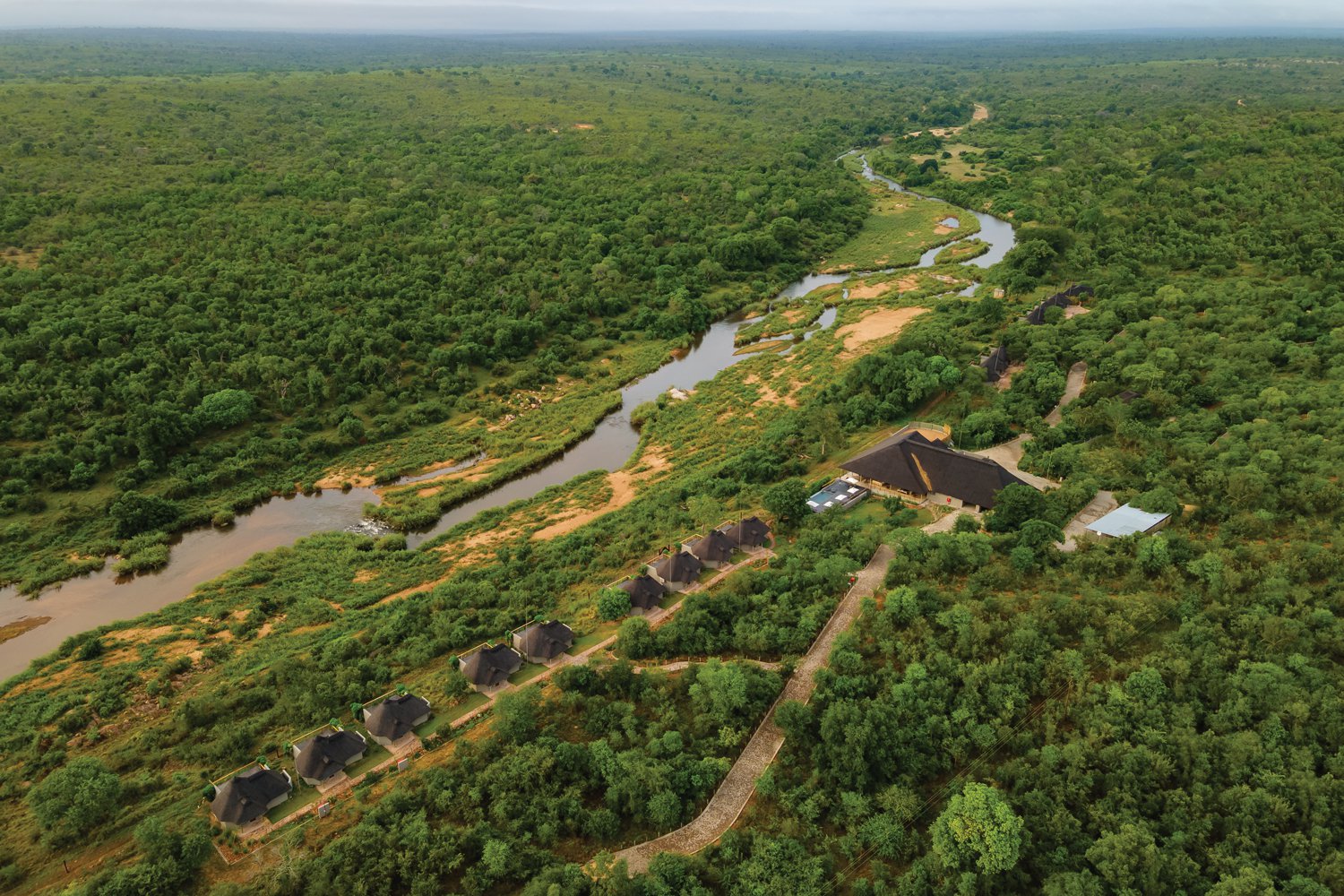A jewel in South Africa’s crown, Kruger National Park spans a vast area of 19,455 square kilometres, where every twist and turn could reveal a once-in-a-lifetime wildlife sighting. An encounter with the Big Five is on our minds as we make our way to Leopard Sands, a five-star luxury lodge, from Johannesburg via a comfortable transfer organised by Emirates Holidays.
Our group of four is greeted by a welcome choir upon arrival, instantly bringing smiles to our faces, which only get bigger as we spot the viewing deck from the lobby. Kruger lies a stone’s throw away, separated from the property by the Sabie River, which winds its way through the park before flowing into neighbouring Mozambique. A few noisy splashes and grunts have us rushing to one end of the deck, looking at the river for signs of life. Someone hands me a pair of binoculars and I’m rewarded with my first sighting less than 30 minutes after check in. Fortunately for us, a pod of hippos live on the banks, a few hundred metres from the lodge, and we never tire of watching their antics during our stay.
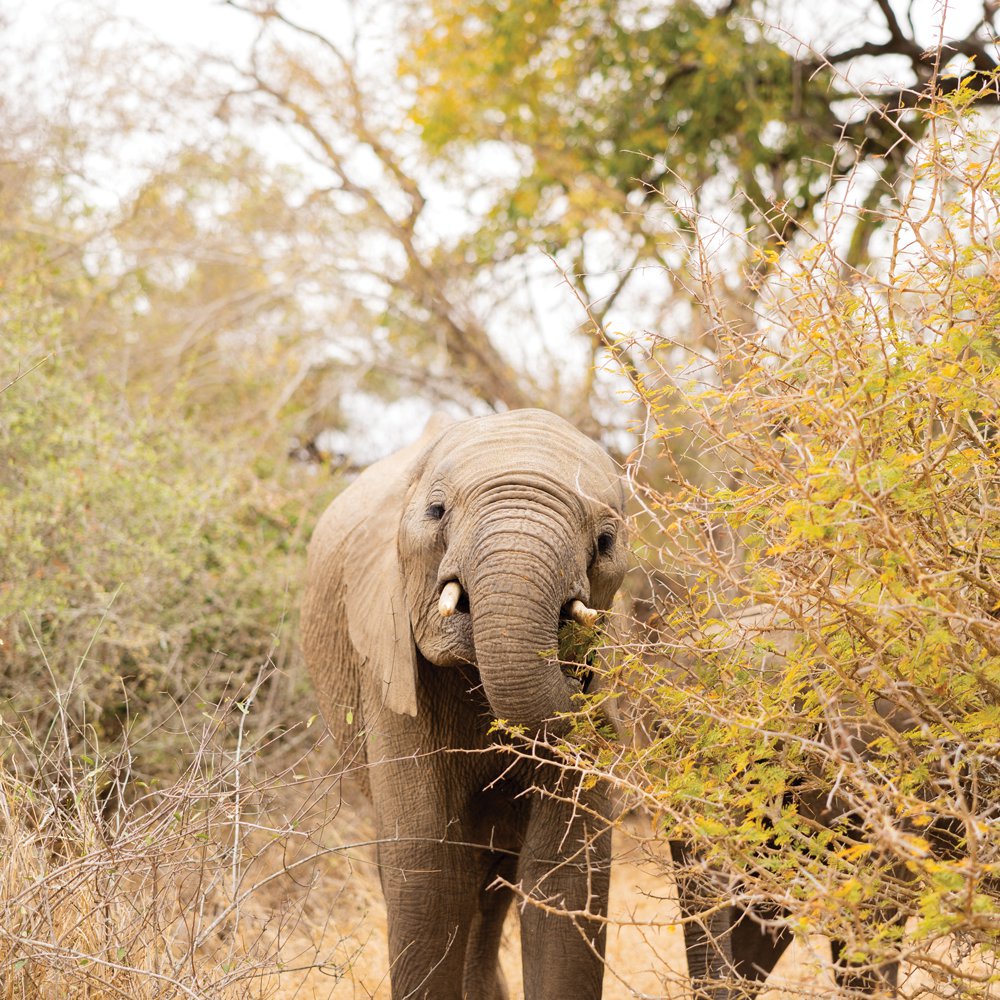
Elephants frequently visit the banks of the Sabie River, within easy sight of the lodge
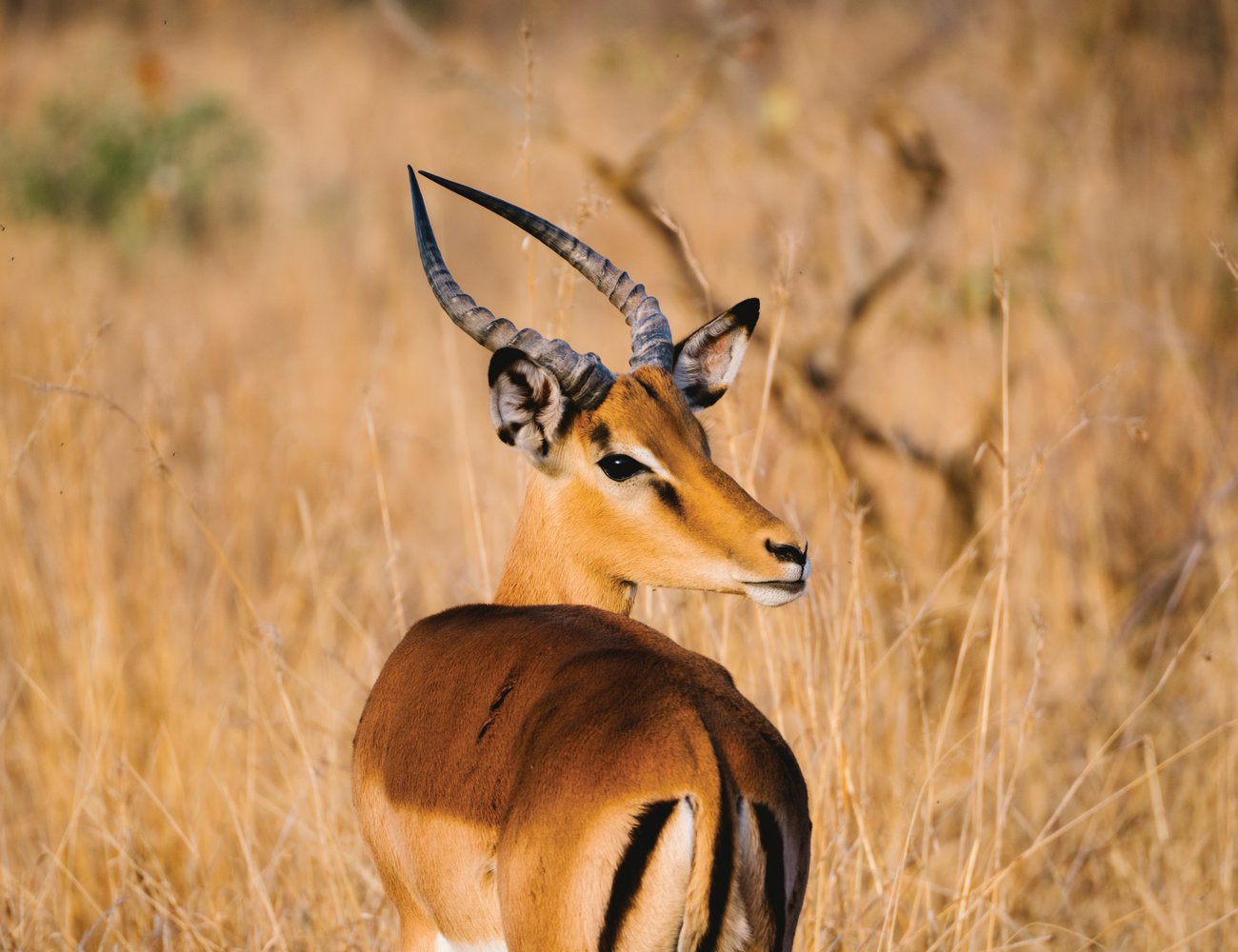
Herds of elegant impala roam the park, blending seamlessly with the tall savannah-like grasses
THE PROPERTY
South Africa’s bushveld is a region dominated by savannah-like vegetation featuring a mix of tall grasses, trees and scrubland, with Kruger falling within this ecosystem. In their quest to give guests an authentic stay in this environment, the founders of Leopard Sands developed only 10 per cent of the 32 acres owned by the property, with 18 exquisitely designed suites catering to a maximum of 36 guests. I rise at 6.00am on our first morning, heading out to the balcony. An unseasonal thunderstorm the previous night reveals a freshly washed world, the scent of damp mud and herby green vegetation capturing my senses. Each suite faces the park as well as the East with glorious views of the sun rising over the African bush.
Inside, the décor reflects African safari luxury, blending modern and rustic elements. The most striking feature is the thatched roof with exposed beams that add to the organic aesthetic, a striking contrast to the polished concrete floor and neutral colour palette of grey, black, white and natural wood accents. Sliding glass doors allow plenty of natural light to filter in, while rugs and wall art feature bold, geometric patterns that echo traditional African designs. My favourite feature is the freestanding stone bathtub, which I sink into while looking out at the park. A private outdoor shower is also connected to the suite – though you may find yourself with an audience of cheeky vervet monkeys!
Wide paths lead to the main building, which houses the reception, lobby and dining area, connected to the viewing deck and infinity pool.
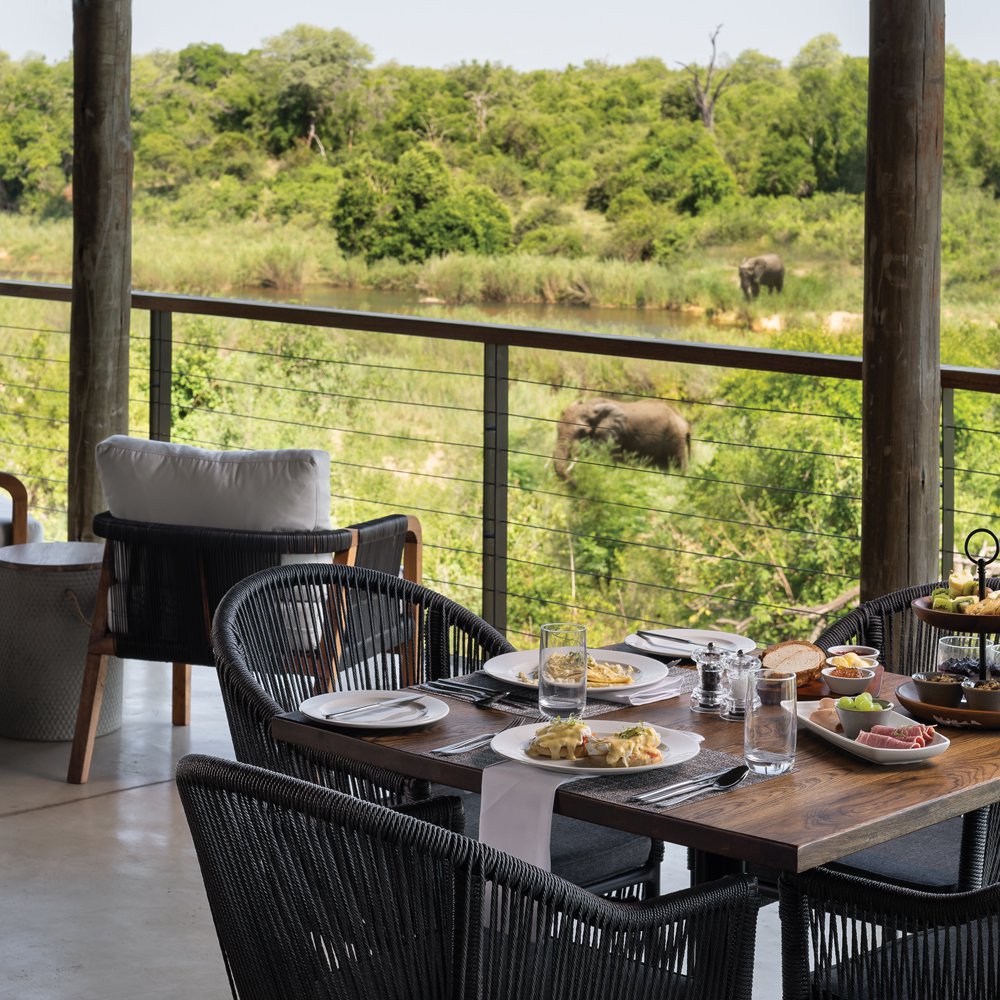
Breakfast with a view
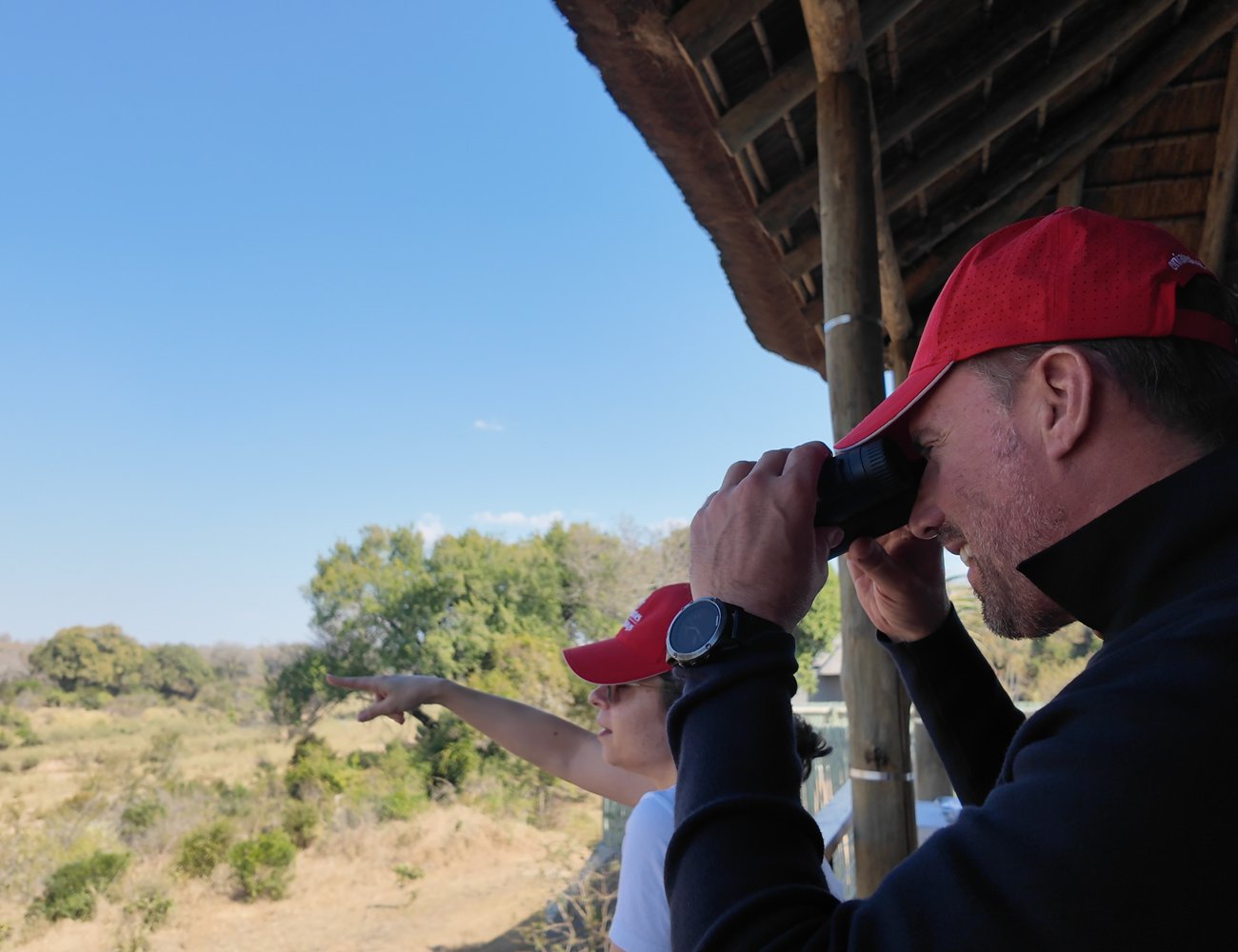
The excitement of spotting elephants in the wild never grows old
SAFARI
Leopard Sands offers two game drives each day led by guides with over 20 years of experience working in Kruger National Park. All guides employed by the park share an intricate network of information which keeps them up to date about the movement of wildlife, ensuring all visitors come away with a few sightings.
An afternoon game drive at 2.30pm is our first foray into the bush. A visit during the summer months means a lusher landscape with higher chances of animals being spotted at watering holes or by the river. However, during winter the vegetation is sparse, resulting in considerably clearer sightings, yet nothing could have prepared us for the spectacle of a coalition of 10–12 young male lions enjoying a feast of buffalo by the side of a trail. “They probably killed this buffalo a few hours ago,” says our guide Jimmy, as he stops the vehicle a few metres from the big cats, who don’t seem bothered by their human audience. This raw, gory side of nature has us all mesmerised – some of the lions have already had their fill and are lying on their backs, legs in the air under the shade of a large tree, blending perfectly with the long beige grass while others have their faces deep in the belly of the unlucky buffalo. We stay in this spot for 20–25 minutes, noticing vultures alighting on nearby trees in silent vigil as they wait their turn at the table.
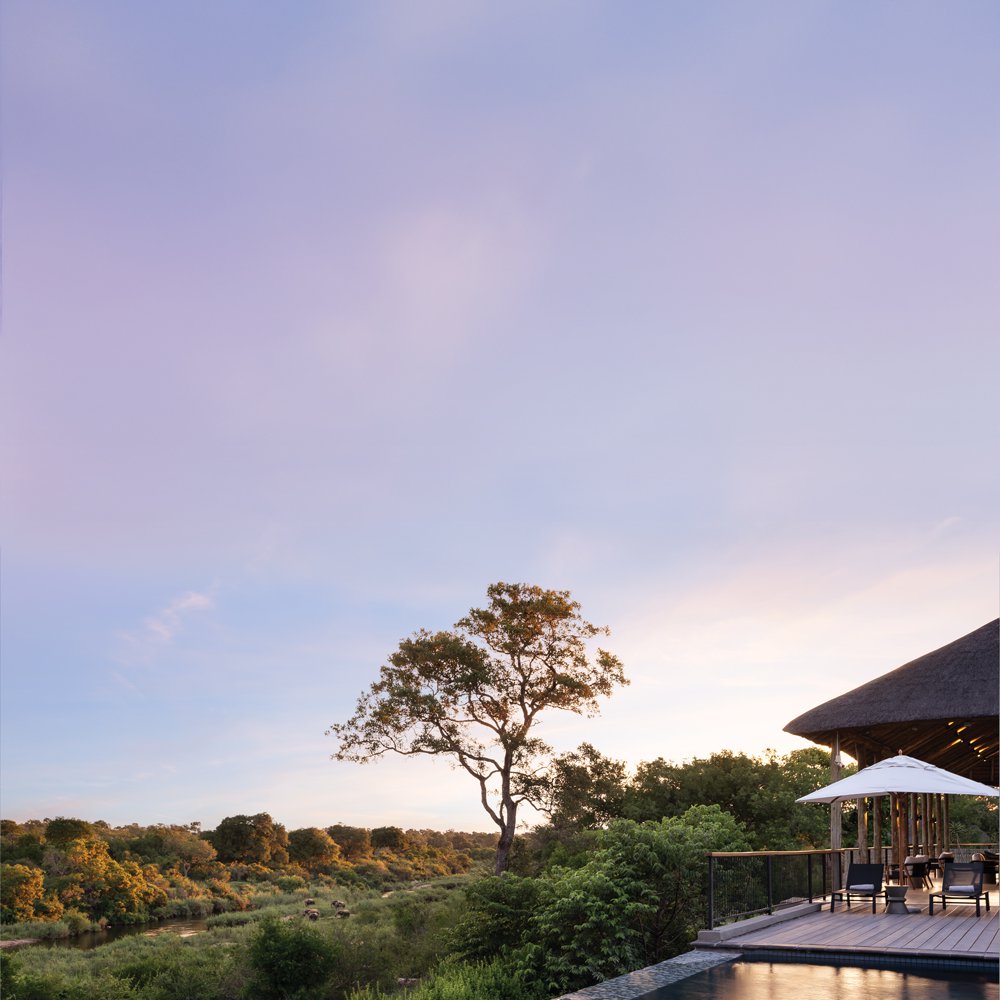
The summer brings plenty of rain, creating a lush tapestry around the lodge
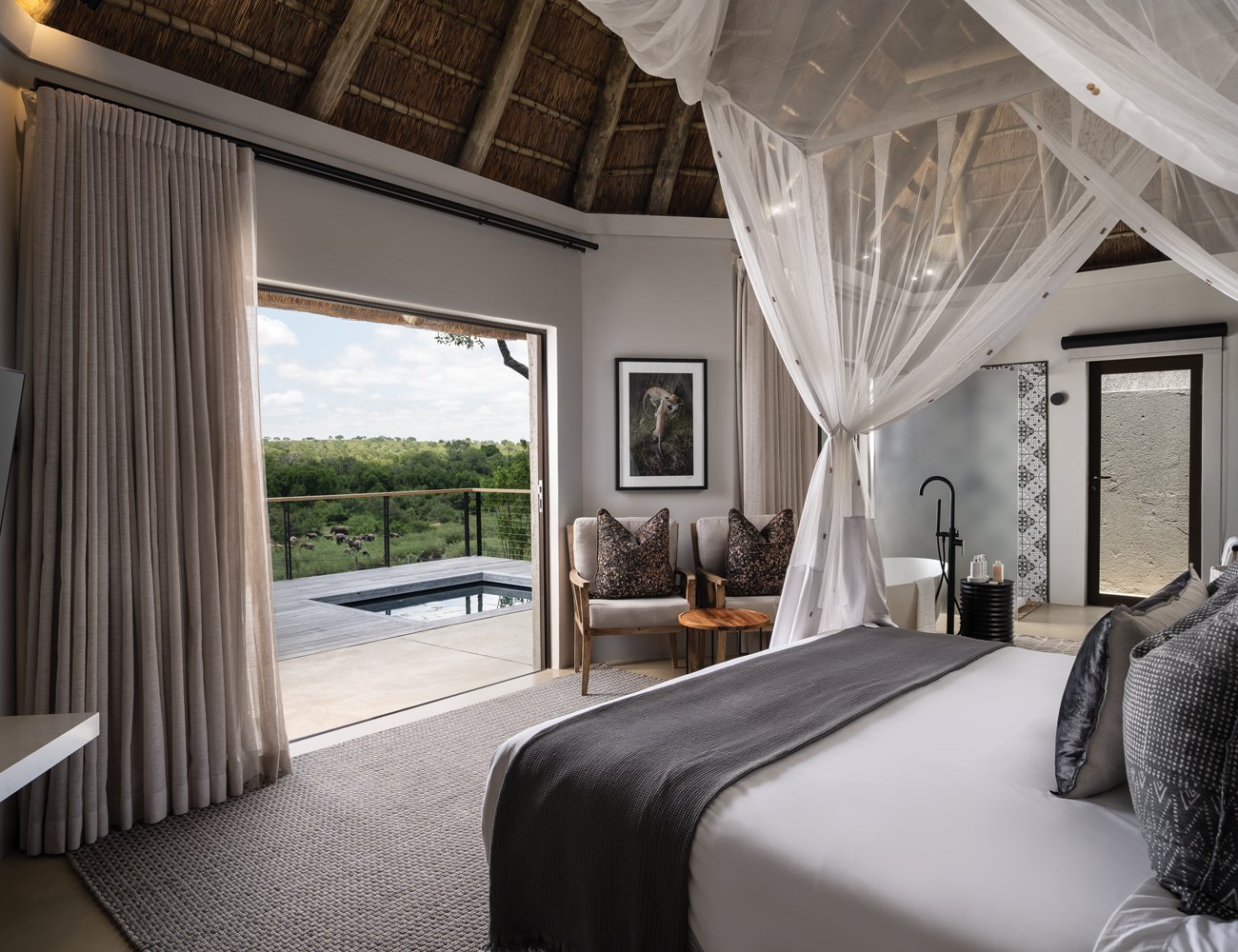
All the suites at Leopard Sands provide uninterrupted vistas of the park
Time seems to gallop inside the park and soon the sun begins its steady descent towards the horizon, bathing the sky in hues of orange and pink. As the vehicle moves over the dusty terrain, we spot herds of elegant impala, waterbucks with the distinct “toilet seat” marking on their rumps, an African fish eagle, a lilac-breasted roller with striking plumage and a lone tusker in musth (which means he’s on the lookout for a girlfriend, a task that can make him particularly grumpy). It’s impossible to look away from this magnificent creature with its quiet strength, efficiently ripping up vegetation from the ground even though we’re all on the edges of our seats, nervously wondering when and if he’ll charge out of the bush, as punishment for interrupting his meal. Dusk is nearly upon us as we reach the exit gate, thrilled by sighting three of the big five, even though one had succumbed to the circle of life.
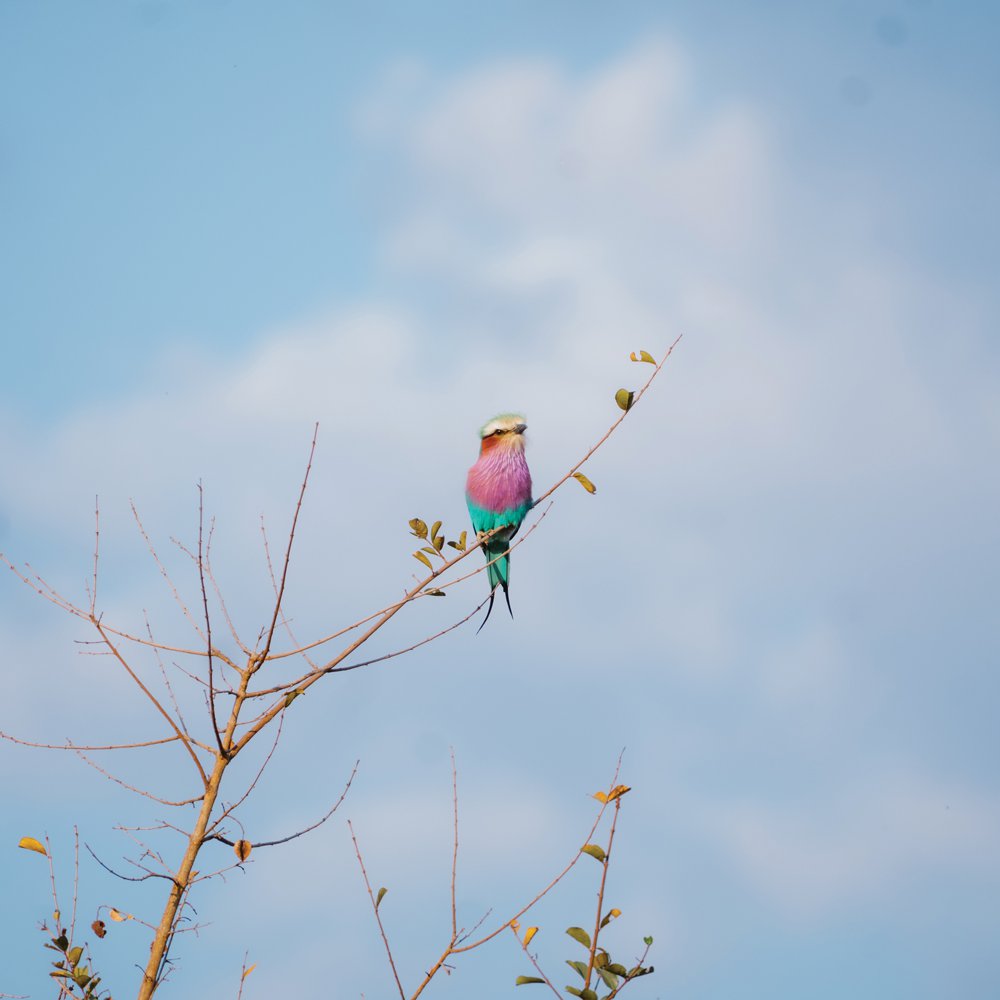
Lilac-breasted roller
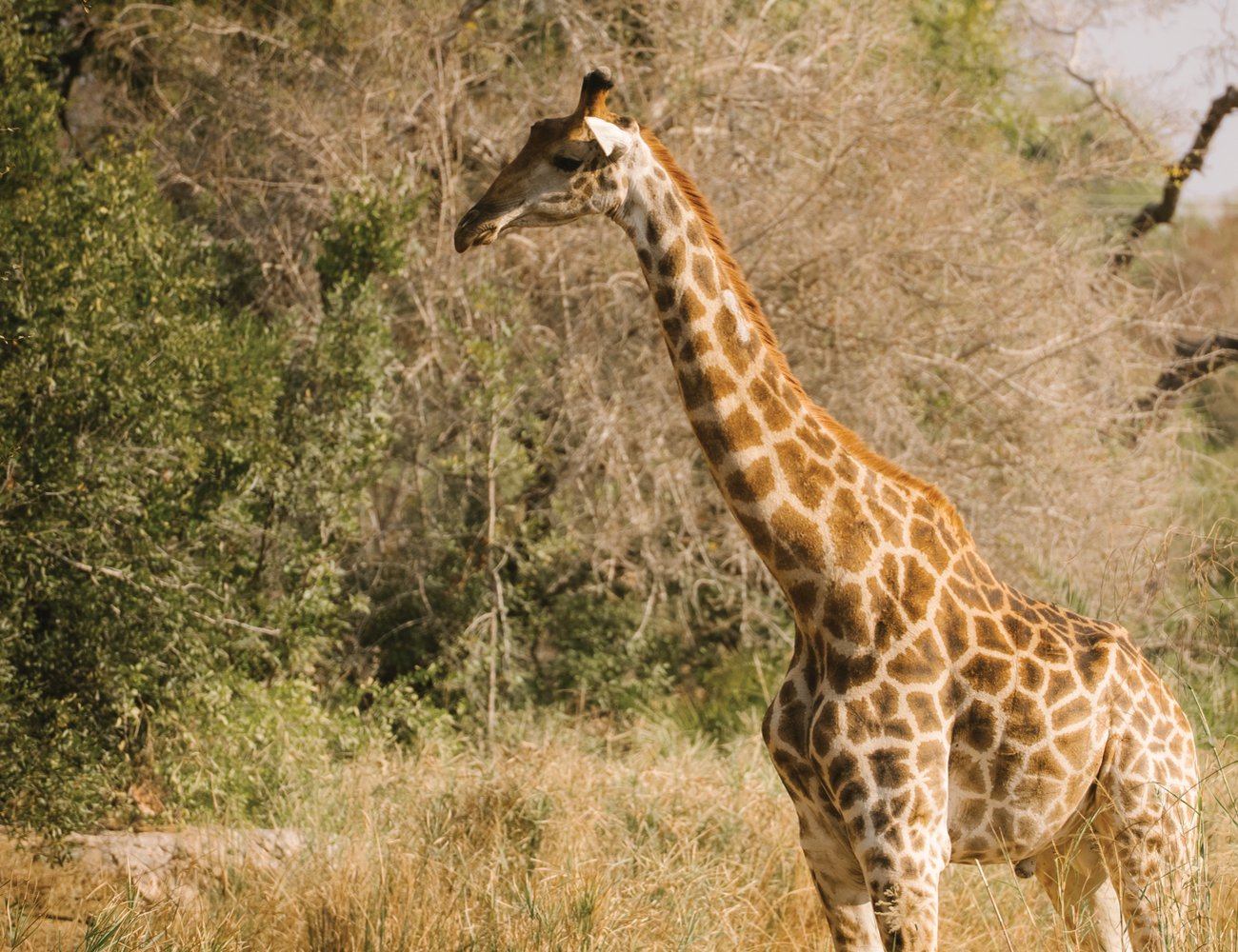
All giraffes have unique spot patterns
The sun is yet to make an appearance when we enter Kruger the following morning at 6.00am. Blankets provided by the hotel come in handy against the cold air that seems to pierce through our layers as the vehicle picks up speed. Our guide takes us to meet the lions again. They’re still gorging on buffalo, though the carcass is more bones now than flesh. The air is thick with the stench of decay, another reminder of the rawness of nature. “When they make a kill this big, they’ll eat about 25 per cent of their body weight, which can sustain them for about three days,” explains Jimmy.
A warm glow begins to spread across the landscape as we go further into the park. When Jimmy asks what I’d like to see, hyenas are at the top of my list. Luck is on my side this day – a lone spotted hyena is approaching us. Unperturbed by the vehicle, he lumbers past and disappears into the bush; the vehicle veers onto a narrow dusty trail, and Jimmy points to the left where a female hyena is resting in the shade next to her den while her cub scuttles into a tunnel that connects to the other side of the trail, emerging to greet another clan member. A tower of giraffes glides across the road in front of us minutes before we exit the park, marking the end of an unforgettable safari.
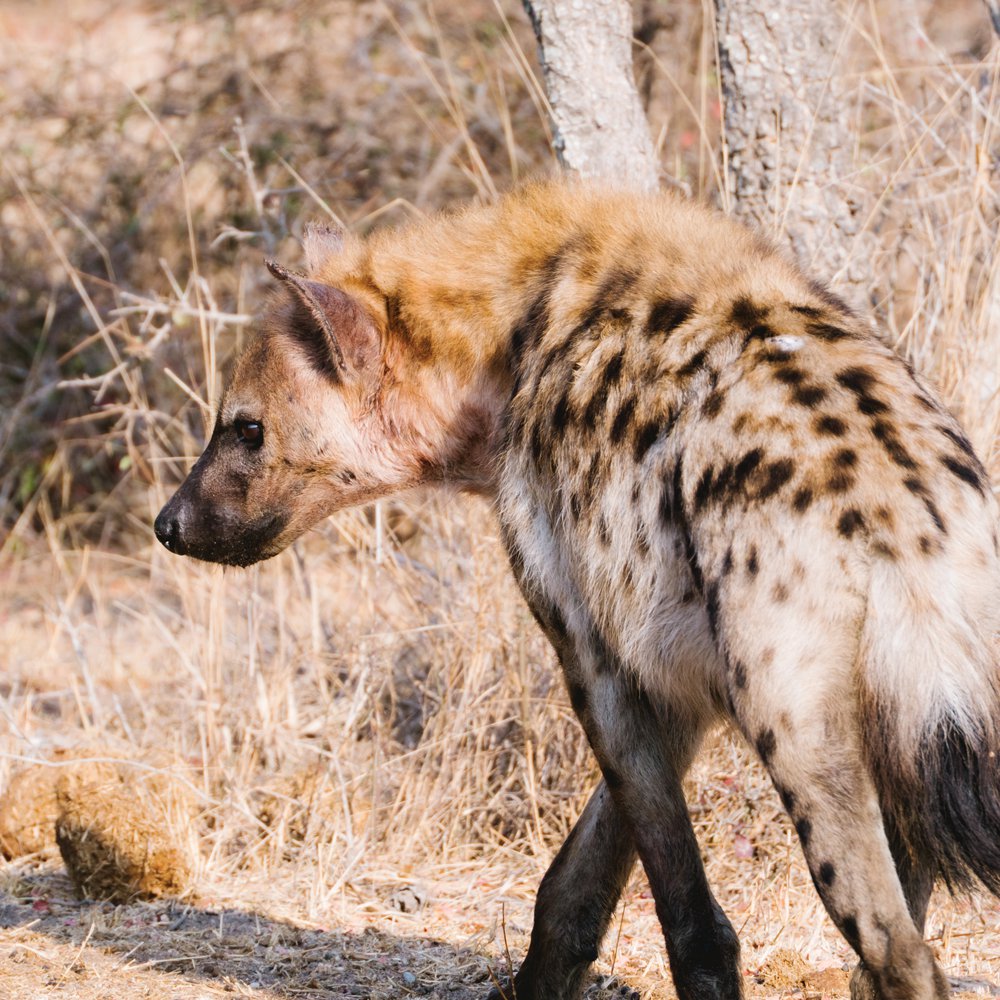
Hyenas are apex predators, often challenging lions for food
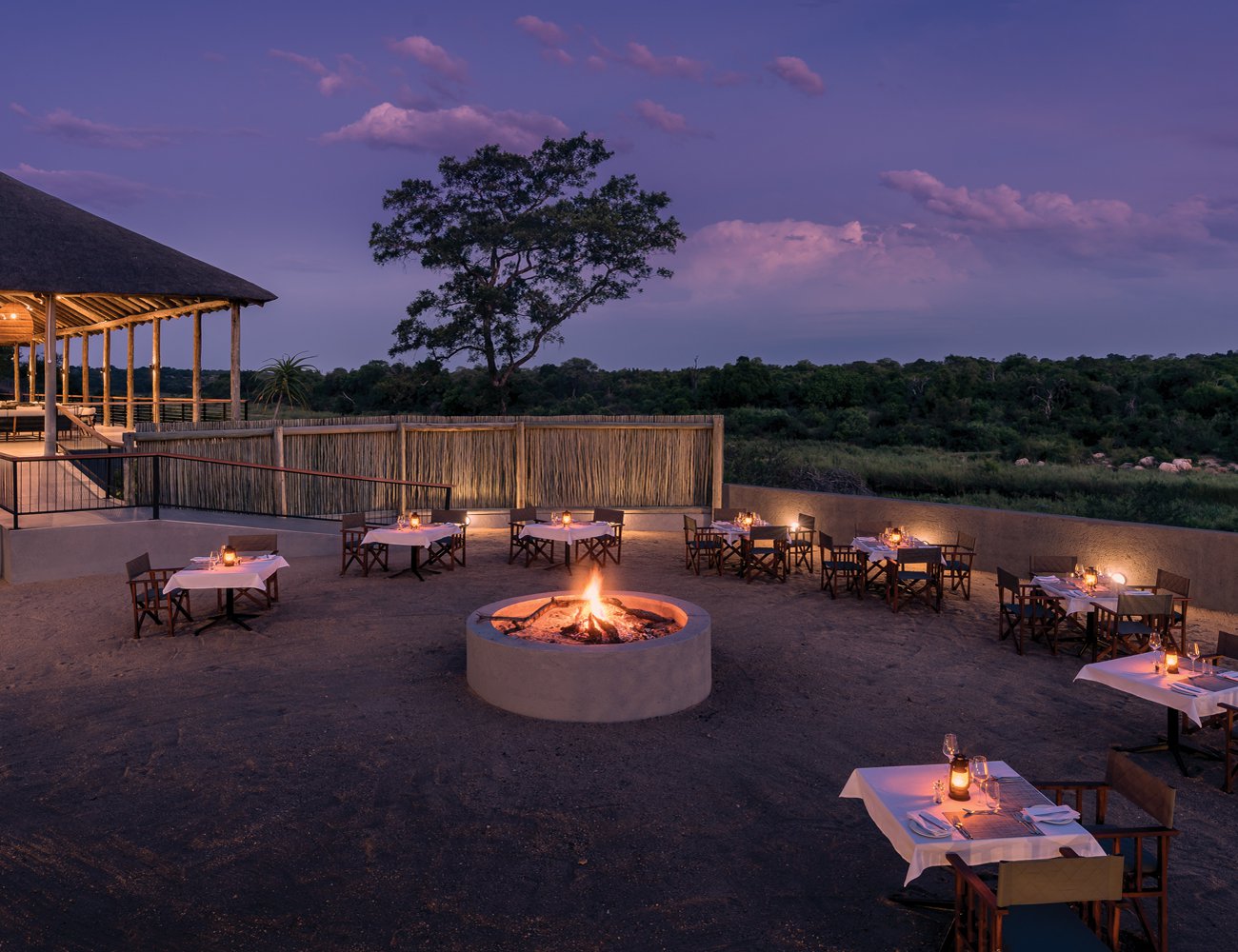
Boma nights are a great way to experience traditional South African culture through music and dancing around a bonfire
FOOD & CULTURE
South Africans love a good gathering, and most weekends are spent at braais celebrating life with family and friends. The team at Leopard Sands ensures guests can experience this cultural tradition with braai afternoons on the deck and boma nights twice a week. Executive chef Johan Lourens Liebetrau joined the F&B team in June of 2025. Communicating with us via sign language, he informs us that the love for food runs in his family – his father and grandfather were chefs and his son is currently training to be a chef. Chef Johan’s prime focus is to offer international guests a taste of South African food such as potjiekos or a traditional stew made in a three-legged cast-iron pot over an open fire, traditional spiced sausages known as boerewors, and sosaties, which are marinated lamb or chicken skewers. The afternoon braai is where I taste freshly made roosterkoek (bread on the braai) for the first time, eating them with lashings of salted butter. A herd of elephants also decides to join us for lunch, emerging from the bush to frolick in the river, giving all of us our very own Nat Geo moment.
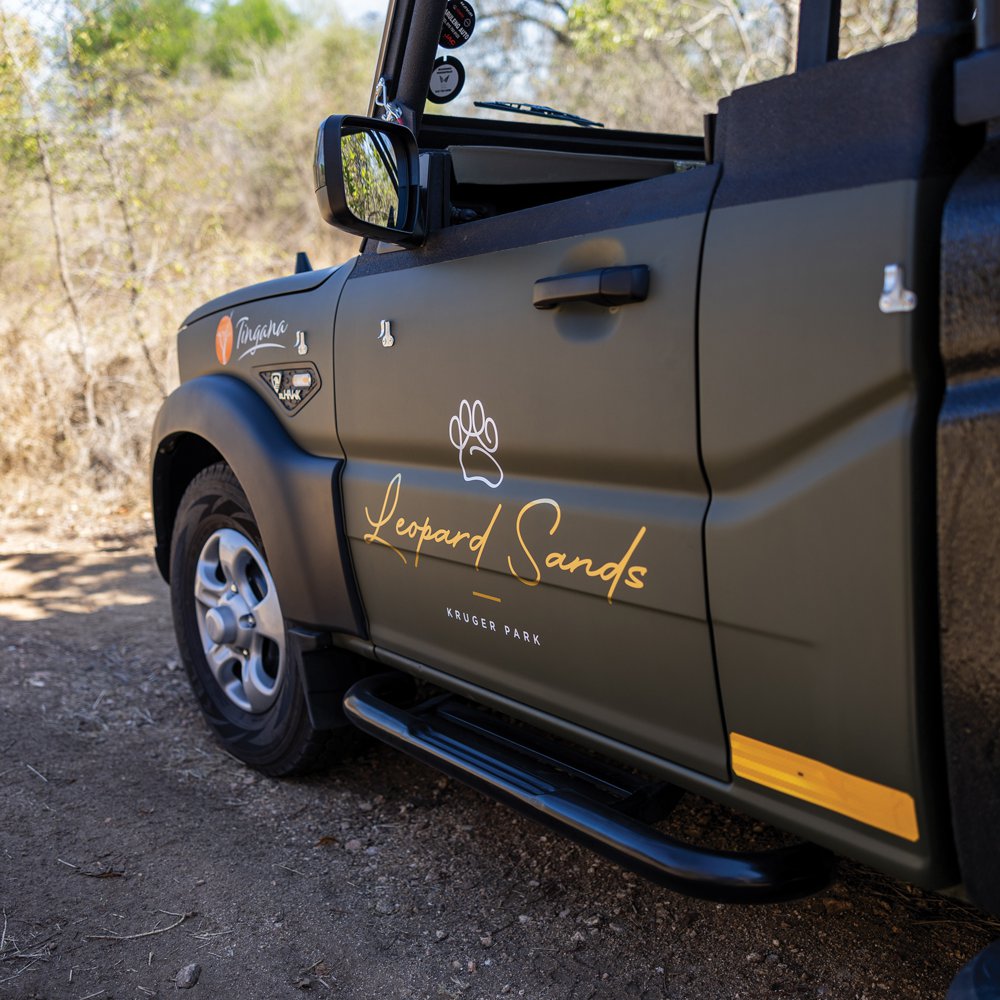
Morning and afternoon safaris offer different experiences
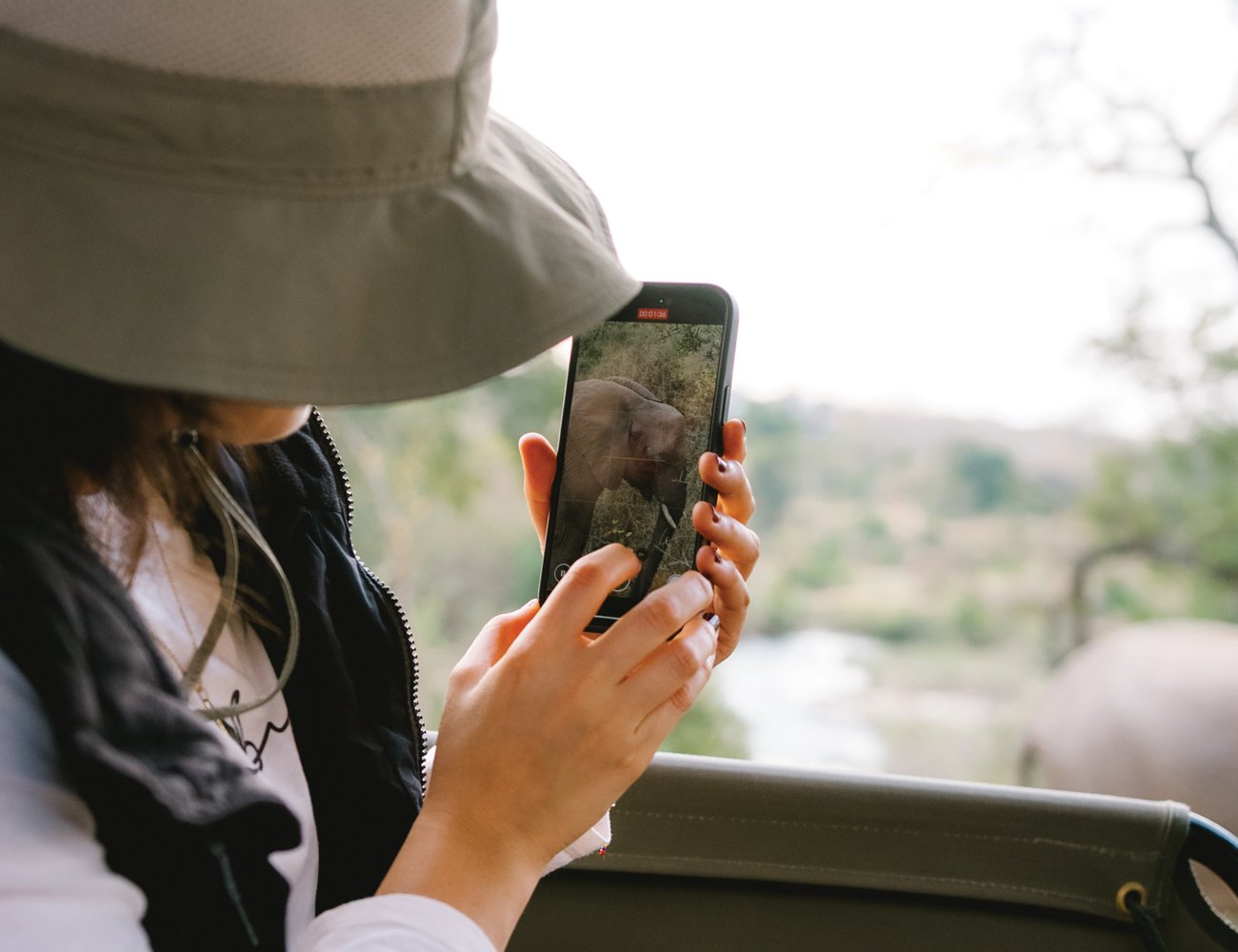
Photo ops never cease during a safari
Boma evenings at Leopard Sands combine a South African dining experience with cultural entertainment centred around a bonfire. Artists from the local Belfast tribe sing and dance before dinner and guests are encouraged to participate. I join the group, hesitantly at first, but the exhilarating beats of the drums draw out my inner performer and soon I’m following the lead dancer’s steps as best I can, laughing at my own clumsiness. A hearty South African menu awaits with a variety of dishes such as pap (a thick polenta-like side dish made from maize), sheba sauce (a tomato-based relish), morogo (leafy greens commonly cooked with onions and tomatoes), impala potjie (antelope and veggie stew slowly simmered over a fire), lamb chops and beef fillet. A holiday in South Africa would be incomplete without trying malva pudding. This warm, pudding-like dessert with a spongy texture has a rich, toffee flavour and is often served with custard. Tucking into my bowl of pudding, I watch sparks from the bonfire drift upwards towards the stars and I send up my own thanks to the universe for an incomparable experience.

Get in touch
Plan your South African safari adventure with Emirates Holidays, combining flights, private transfer and a luxury stay at Leopard Sands. emiratesholidays.com
